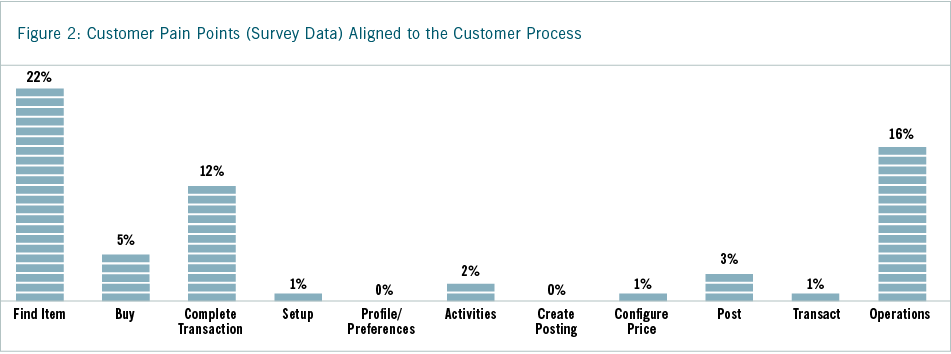Process-based thinking is used during strategic activities to ensure the product is filling a gap in the market or solving a customer problem. During tactical activities, process-based thinking can ensure a team thoroughly identifies what must change across people, processes, and technologies to deliver the solution.
Ensuring the Product Solves a Problem Using a Process-Based Approach
Product management starts with understanding the needs of customers and markets. As the number of software products surges, customers are increasingly aware when a product does not solve a problem or fill a gap in the market. Often this happens because companies deliver products by individual technology platforms; their product organizations are aligned with their information technology structure. This alignment results in product managers focusing on how to make the technology better rather than on solving the customer’s problem. A process-based approach will help avoid this pitfall. The key: Capture the customer’s journey and use that as a framework to start every product development effort (Figure 1).

Case Study: E-Commerce
The example in Figure 1 reflects a customer’s journey in the e-commerce industry. The experiences a customer has with the product are associated to processes that a customer uses to have those experiences. In this case, feedback from a customer survey was used to identify where pain points existed and mapped to these processes (see Figure 2 above). The result of using this process-based approach changed the priority of several product managers from focusing on improvements to “buy” functionality, that captured only 5 percent of the pain points of their customers, to focusing on functionality that helped the customer find the item, and captured 22 percent of the pain points their customers were experiencing. As a result of this process-based approach, product managers could see where to improve operational processes and increase customers’ ability to complete transactions. In the end, product managers achieved three key outcomes: a higher confidence level that the right problems were being solved; stronger business cases; and the intrinsic reward of knowing that they were doing work that mattered.

Ensuring Complete Coverage When Defining the Solution — Using a Process-Based Approach
In addition to defining the product’s functionality, product managers are responsible for ensuring the success of operationalizing the product. Many product managers enjoy focusing on developing a new product, but forget that the internal support processes are crucial for ensuring its successful launch and operationalization. Poor customer support, incorrect billing or unclear reporting are all operational issues that can undermine a product.
Cross-functional process-based discussions are the foundation of a successful product launch. These discussions identify any required process changes and clarify roles and responsibilities. While this level of detail may seem cumbersome, the time spent clarifying expectations will save time and headaches after the product launches. An additional benefit: Documenting these discussions can be a tool for training during the product launch.
Case Study: Online Advertising
A Business Process Framework is a tool that ensures you don’t miss any key effects of implementing a product. Figure 3 shows an example, illustrating the results of implementing an online advertising product. The effects of rolling out the new product spread beyond that of just the product and sales organization. Some areas of impact include:
- Ordering and Provisioning: When considering product packaging, or deploying multiple products at once, it became more complicated. Deploying new advertising products had the potential to affect the performance of existing products.
- Customer Support: Significant emphasis is put on customer service and increases the likelihood of repeat purchases.
- Billing: Billing is a regular customer touch-point, providing an opportunity for advertising complementary products, offering a cross-sell/up-sell opportunity.
- Financial Performance: New products need to be rolled-up into financial metrics and communicated clearly to investors.
- Analytics and Reporting: For technology-based products, the metrics collected throughout the lifecycle of the product and the processes for managing that data need to be clearly defined.

Using a process landscape helps ensure product managers consider and plan for how a new product will affect the rest of the business. Doing so will set the organization up for a successful launch, minimizing typical post-deployment issues.
Process-based thinking is a critical skill that helps product managers balance the continuum between creative thinking required for product strategy and the detail-orientation required for product deployment. When using process-based thinking, a few guiding principles will ensure success:
- Understand the processes involved in the market, ensuring that the problem is grounded in solving a real problem.
- Frame product implementation conversations in terms of the processes performed by affected stakeholders (internal or external customers) to avoid focusing on only technology enhancements.
- Encourage the use of process frameworks, including customer journey maps and business process landscapes, to ensure a thorough analysis of the process.
By approaching your next product launch with the process in mind, you can help ensure its success,both strategically and operationally.
